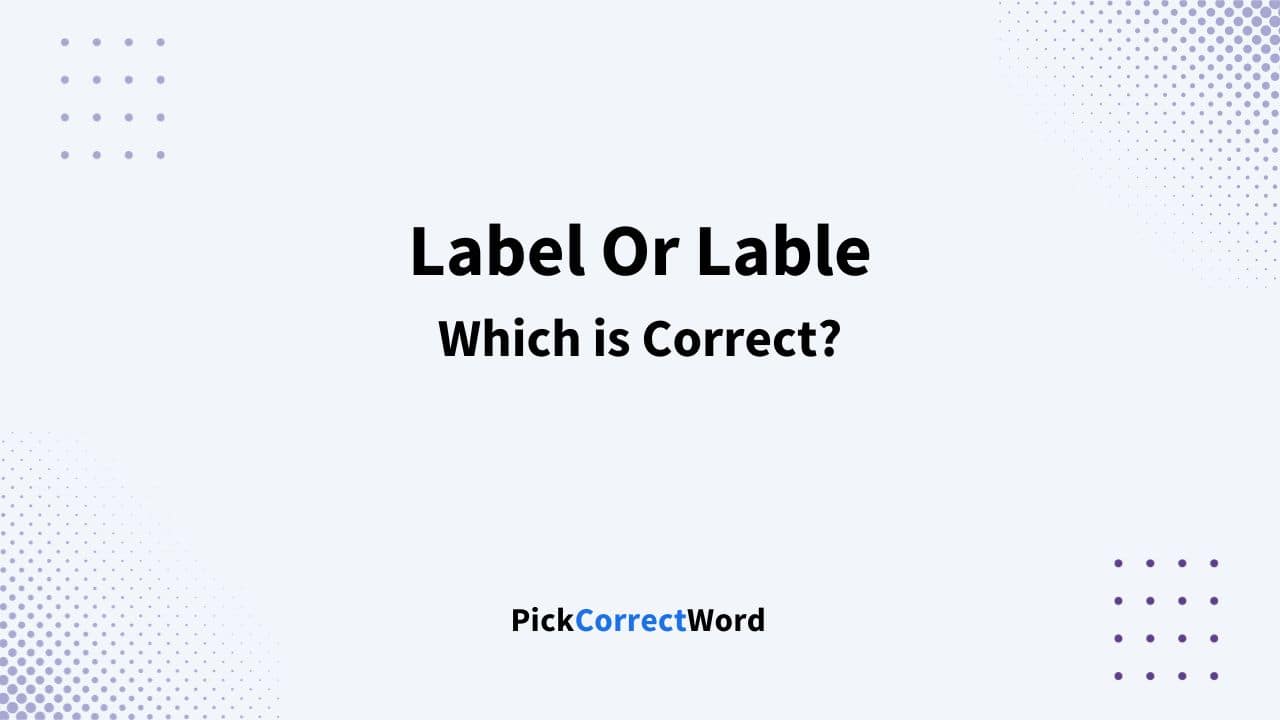Ever found yourself second-guessing the spelling of ‘label’? Should it be label or lable?
You’re not alone. This common word often confuses people when it comes to spelling.
Well, let’s clear up the confusion right away: It’s label; that’s the right way to spell the word.
On the other hand, the word ‘lable’ does not exist in English dictionaries and is considered a spelling mistake.
Label or Lable: Which is Correct Spelling?
The correct spelling is “label,” not “lable.”
The word is pronounced as “LAY-buhl.” When you speak, stress the first syllable slightly more than the second.
Label: Dictionary Meaning
According to the Oxford English Dictionary, ‘label'(noun) is defined as “a small piece of paper, fabric, plastic, or similar material attached to an object and giving information about it.”
Label is also used as a verb, in which case the dictionary defines it as: “to fix a label on something or write information on something” or “to describe somebody/something in a particular way, especially unfairly”
Grammar and Usage of the word Label
To understand how to use the word “label,” you need to know how it works as both a noun and a verb. If you learn to do this right, your language will be clear and express the right meaning.
Label as a Noun[with examples]
As a noun, “label” refers to a piece of paper, cloth, or similar material attached to an object which provides information about it. This could include details such as the brand, size, instructions, or anything that helps to identify or describe the item.
- Example: The label on your shirt provides washing instructions.
- Past tense example: The label was faded but still legible.
Label as a Verb[with examples]
When used as a verb, “label” implies the action of attaching such an informational piece to something, or metaphorically, to assign a category or description to a person or thing.
- Example: You should label all your boxes when moving to a new house.
- Past tense example: She labeled each jar meticulously before placing them on the shelf.
Remember that “label” is the correct spelling in both noun and verb forms. Variants such as “lable” are incorrect and must be avoided in all sentences.
Labeled or labelled: The correct past tense of label
So, what about the past tense form of the word label? Should you write it as labeled or labelled?
The answer mostly depends on who you’re talking to. Label is spelled differently in the UK and the US when it comes to the past tense.
Labeled is the standard way to write for people in the United States. This is in line with the tendency in American English to use easier word structures. In this case, there is only one “l” before the -ed ending.
On the other hand, if your readers are from the United Kingdom, Canada, and other former British colonies, you would use labelled. This form includes an additional ‘l’ before adding -ed.
| American English | British English |
| labeled | labelled |
| labeling | labelling |
Remember that both ‘labeled’ and ‘labelled’ are correct but in different regions. The best way to use the word depends on where you live and who you are writing for.
More Examples of Using Label in a Sentence
Remember that the word “label” can mean more than one thing in a sentence, so it’s important to use it correctly to get your point across.
Here are a few more examples, organized into groups to help you see how the word “label” can be used in different situations.
As a noun:
- Identification: The label on your suitcase has your name and address.
- Branding: Shoppers often look for a designer’s label before purchasing clothing.
- Information: Check the label for cooking instructions.
As a verb:
- Assign: Ensure you label each box by content prior to moving.
- Designate: The critic labeled the film as a masterpiece.
- Tag: Please label your dishes before putting them in the communal fridge.


